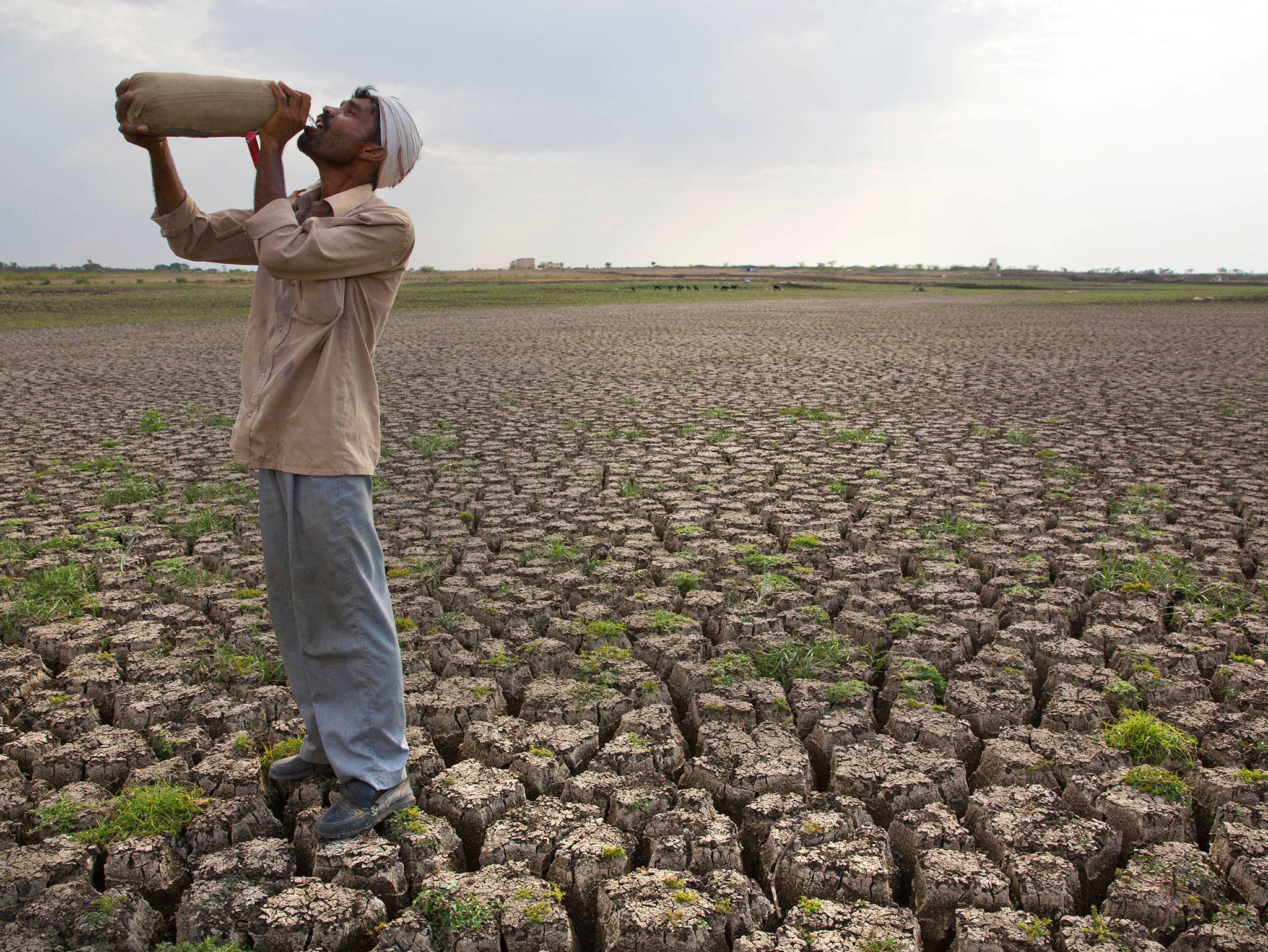European pollution helped cause one of India's worst-ever droughts, researchers show
'The monsoon's bountiful rain is crucial to the economy and to livelihoods in the region'

Pollution from Europe helped cause a drought in India that was one of the country’s worst ever natural disasters, affecting more than 130 million people, according to new research.
Sulphur dioxide – produced mainly by coal-fired power plants – causes a number of harmful effects, such as acid rain, heart and lung diseases, and damage to plant growth.
But sulphate aerosols also have a cooling effect on the atmosphere because it reflects sunlight back into space, a property that has led some to suggest it could be used as a form of ‘geo-engineering’ to reduce the rate of global warming.
However, emissions from the northern hemisphere can change the relative rate of warming in the south, causing the tropical rain-band to shift – with potentially devastating results.
Now researchers at Imperial College London have calculated just how big an effect emissions of sulphur dioxide had on rainfall in India in 2000.
The north-west of India experienced a staggering drop in precipitation of about 40 per cent because of emissions from the northern hemisphere’s main industrial areas.
Europe’s emissions alone caused reductions of up to 10 per cent in the north-west and south-west regions.
One of the researchers, Dr Apostolos Voulgarakis, of ICL’s Grantham Institute, said the study showed how emissions in one part of the world could have a significant effect on another – even if the pollution itself didn’t actually get there.
“East Asia is contributing more [of an effect] because it’s closer, but there is an effect from Europe and also the US,” he told The Independent.
Dr Voulgarakis said their research, along with other studies, showed the kind of problems that might result from attempts to use sulphur dioxide in a geo-engineering scheme.
“Geo-engineering has generally suggested to be problematic because of the knock-on effects it could have,” he said.
“This research shows one of those reasons as it can affect rainfall quite dramatically.”
The figures were produced using a climate model which Dr Voulgarakis said tended to give results on the high side of the range produced by different methods.
10 photographs to show to anyone who doesn't believe in climate change
Show all 10A briefing note prepared by Grantham researchers about the techniques to assess air pollutants said they could have “complex and diverse” effects.
Sulphate aerosols could “cool the atmosphere and so off-set some global warming” but “also increase air pollution levels and cause drought”.
“The impacts of short-lived pollutant emissions on air quality and climate change vary greatly depending on both the region where emissions occur and the location of the affected region,” it said.
“The climate effects of air pollutants are best assessed on a region-by-region basis, and are not easily captured by global metrics.”
It suggested air pollution and global warming should be dealt with as a single issue.
“Air quality and climate policy should be designed simultaneously to maximise beneficial outcome,” the briefing note said.
As the harmful effects of sulphur dioxide became clear, the European Union worked to reduce emissions.
A switch away from fuels with high levels of sulphur saw a 74 per cent reduction between 1990 and 2011.
By 2011, sulphur dioxides were less than half the amount in 2000.
In a blog post, Dilshad Shawki, a PhD student at the Grantham Institute, described how important understanding rainfall was, particularly in India and the surrounding area.
“Each summer the South Asian monsoon drenches the Indian subcontinent, as strong moisture-laden winds from the Indian Ocean deliver over 70 per cent of the region’s annual rainfall in just three months.
“As such, the monsoon’s bountiful rain is crucial to the economy and to livelihoods in the region.
“In recent decades however, rising pollution levels and increases in global surface temperatures have influenced atmospheric circulation patterns in the tropics, in turn affecting monsoon rainfall patterns.
“The challenge for scientists, including myself, is to gain a better appreciation of these relationships in order to build more accurate forecasts. Understanding and predicting monsoon rainfall is of huge importance to those societies that have developed following its rhythms.”
Despite the fall in European sulphur dioxide emissions, India’s droughts have continued as the world has got warmer.
Last year, the country saw its highest temperature on record – a sweltering 51 degrees Celsius (123.8F). Hundreds of people died as crops failed in more than 13 states.
Tens of thousands of small farmers also abandoned their land and moved to cities, while others killed themselves rather than face life in an urban shanty town.
Subscribe to Independent Premium to bookmark this article
Want to bookmark your favourite articles and stories to read or reference later? Start your Independent Premium subscription today.

Join our commenting forum
Join thought-provoking conversations, follow other Independent readers and see their replies